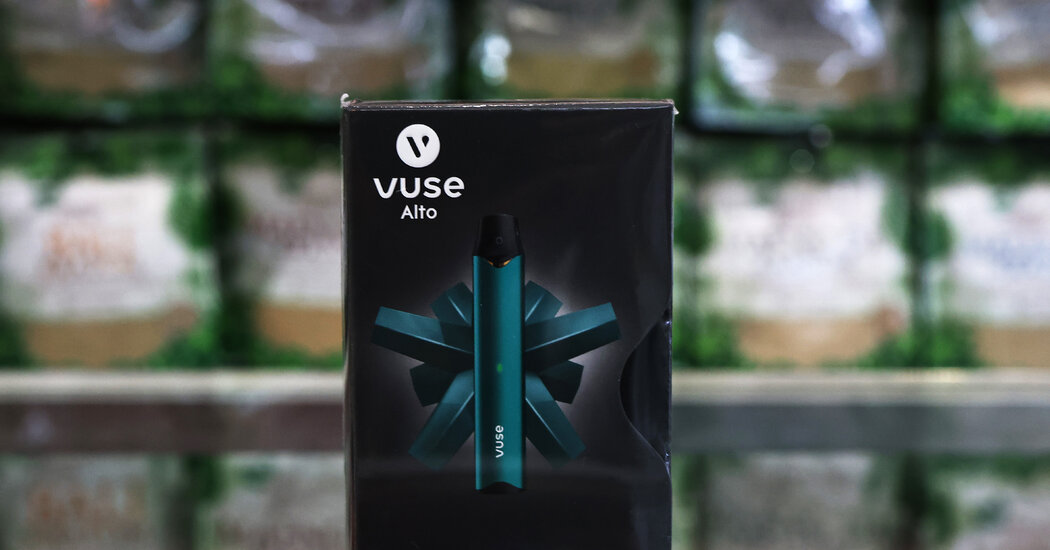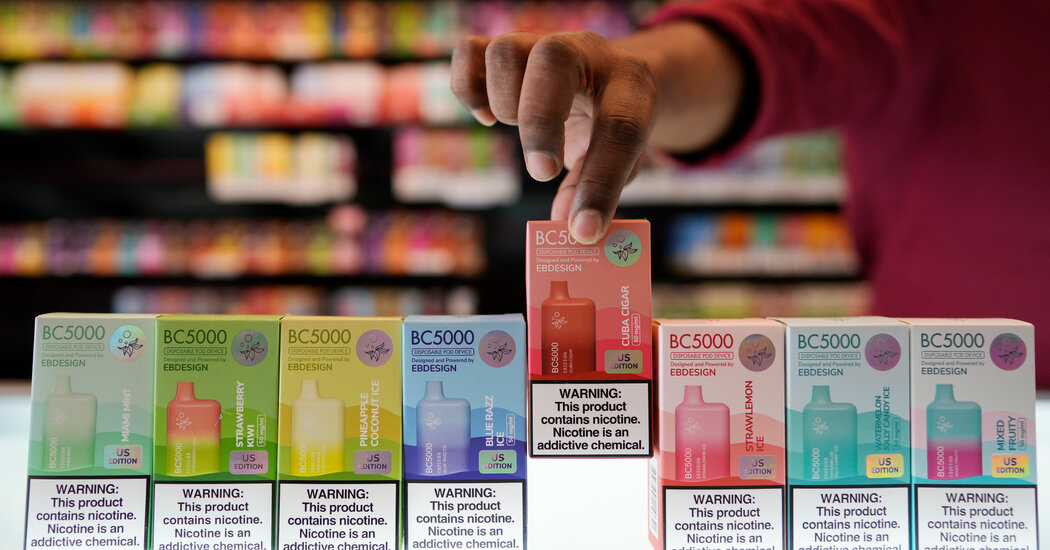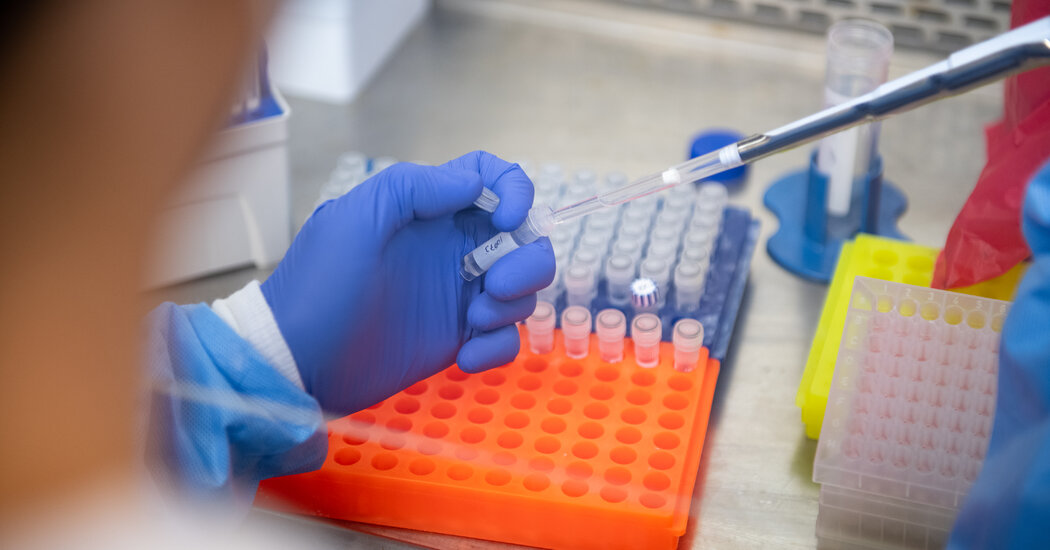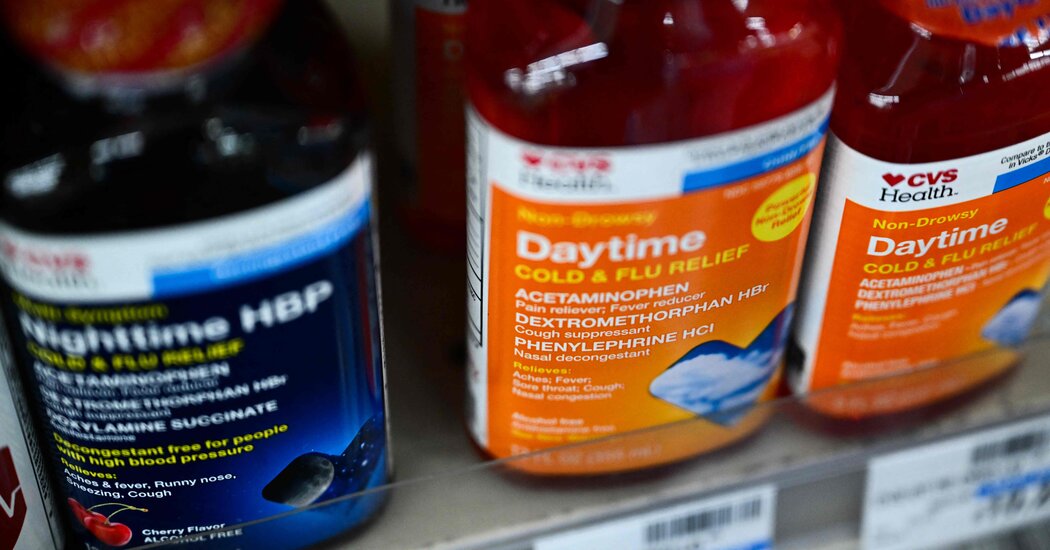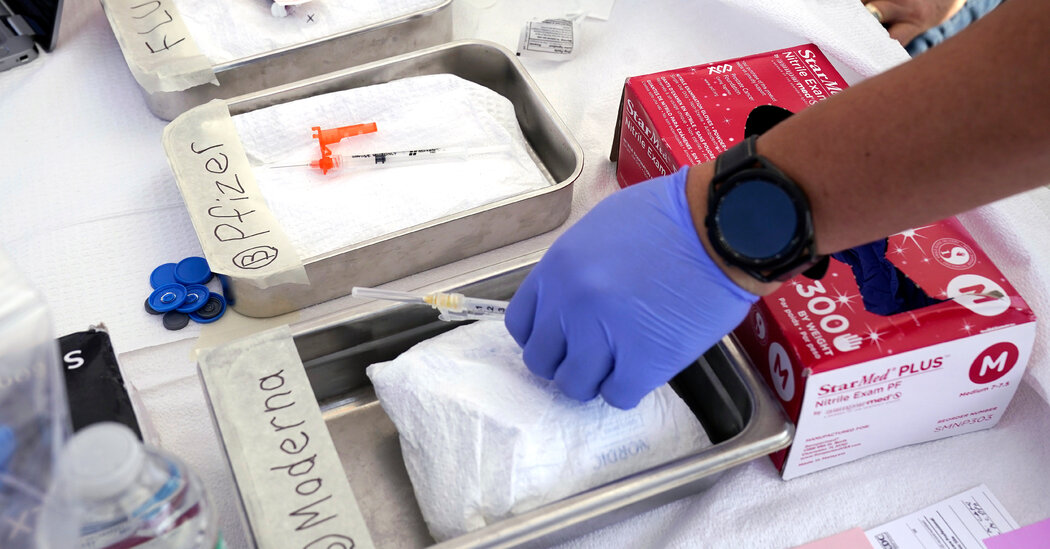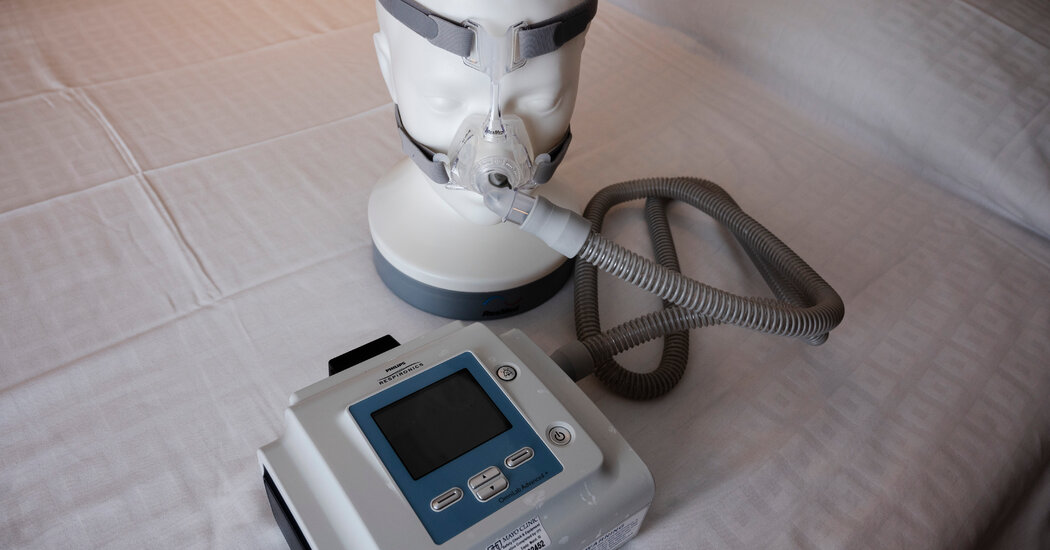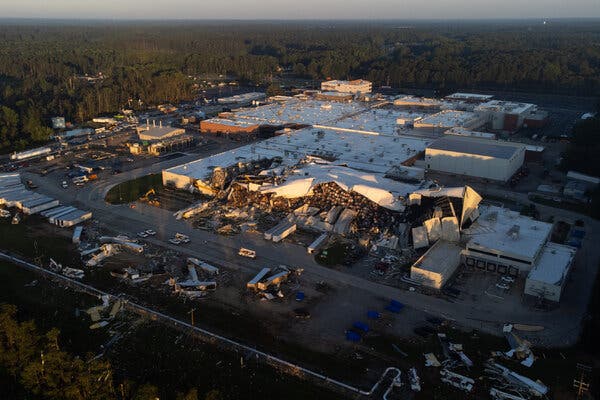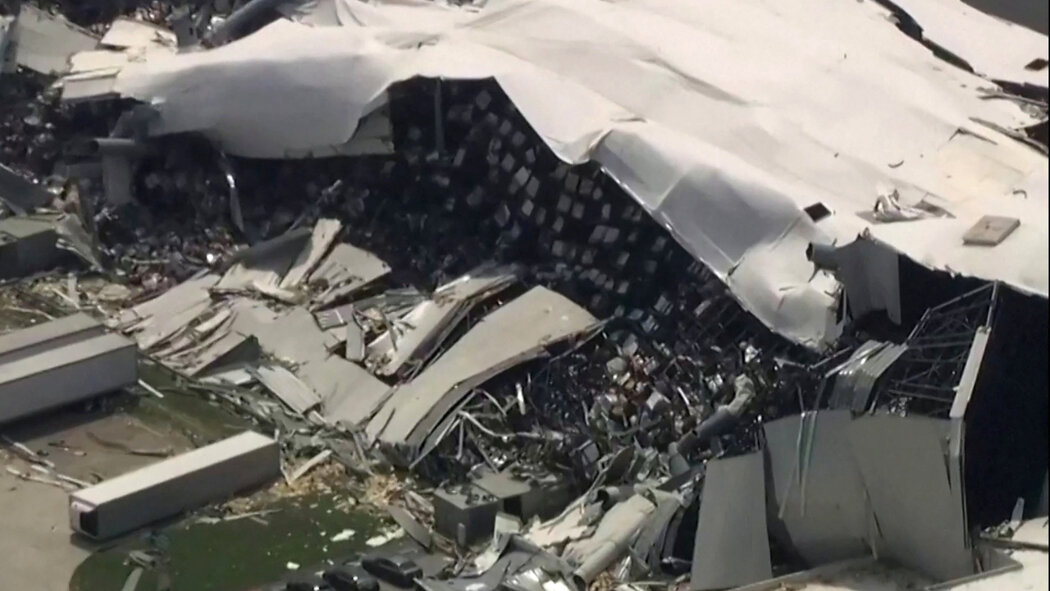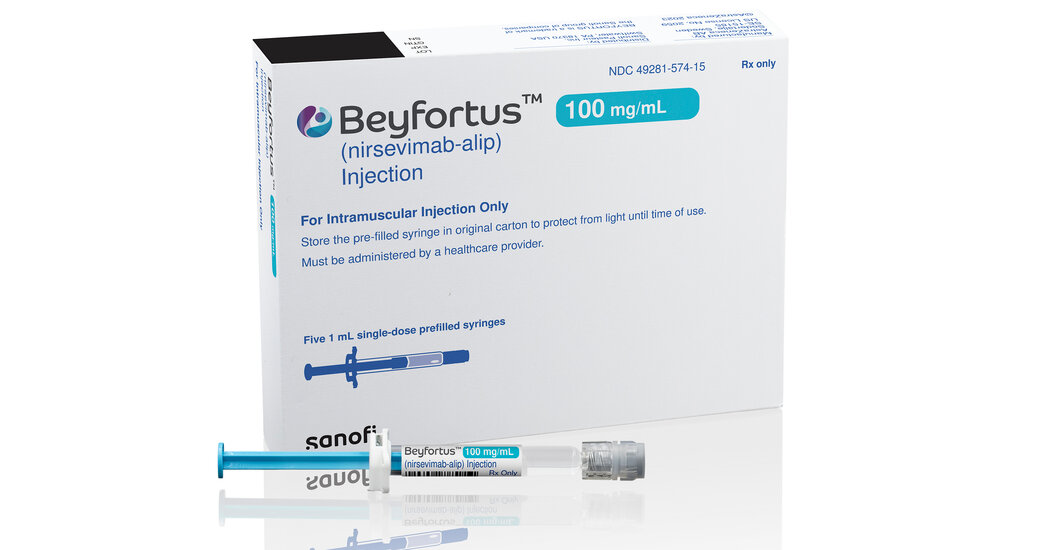Pharmacists affiliated with the University of Florida have spent decades nudging the agency to pull a decongestant from over-the-counter medicines.Dr. Leslie Hendeles began prodding the Food and Drug Administration to reject a decongestant in cold medicines when he had a mop of curly red hair and Bill Clinton had just become president.By the time opposition to the drug had coalesced, Dr. Hendeles was appearing, at age 80, as an expert to testify before the agency’s advisers, his hair white and his overview of the ingredient spanning 50 years.His advocacy culminated in the advisory panel’s unanimous vote on Tuesday, when it concluded that the decongestant, a common ingredient in cold and flu remedies, is ineffective.Prompted by the news, consumers threw open their medicine cabinets upon learning that the decongestant, phenylephrine, was listed in more than 250 of their go-to drugs for congestion like some versions of DayQuil, Sudafed, Tylenol and Theraflu. And the decision has caused some confusion — experts say the ingredient still works in nasal sprays, just not when taken orally in pill or liquid form.Given that the drug is considered safe, experts say there is no need to throw away the products, which contain other ingredients that do work.Nothing will change immediately. F.D.A. officials have to review the panel’s decision, solicit public comments and most likely will give drug makers some time to adjust or swap out ingredients rather than face a decision to strip store shelves of so many consumer staples. Other delays could occur if the companies contest the actions in court. And some experts, notably Dr. Scott Gottlieb, a former F.D.A. commissioner, have long maintained that phenylephrine does work, to some extent. Some defenders of the drug may try to oppose any action that banishes the decongestant altogether.But how phenylephrine stayed on the market this long despite decades of studies and questions is a tangled story involving old drug standards dating back to a law signed by President Kennedy, the proliferation of meth labs using everyday cold remedies in the 1990s, and even the pandemic.Like other federal agencies, the F.D.A. can move glacially, at times hampered by antiquated rules and a morass of regulatory procedures.“There is no question that regulation of over-the-counter medications was broken for many years,” said Dr. Joshua Sharfstein, a former agency official and vice dean at the Bloomberg School of Public Health at Johns Hopkins. The latest moves, he said, indicate that the “agency is only now getting its handcuffs off.”One could argue the process of dissecting phenylephrine — a drug used for dilating eyes and calming hemorrhoids — took roughly six decades. The Kennedy era had ushered in a new law that required the F.D.A. to evaluate a drug’s effectiveness in addition to existing safety standards.President Kennedy gave a pen to Frances Oldham Kelsey of the F.D.A. after signing the Drug Industry Act of 1962, which required companies to demonstrate a drug’s safety and effectiveness before marketing it.Abbie Rowe/White House Photographs, John F. Kennedy Presidential Library and Museum, BostonIt wasn’t until 1976 that the F.D.A. began reviews of over-the-counter cold medicines, like phenylephrine, as a class of drugs.But by the early 1990s, the decongestant still hadn’t received a full approval, and the lengthy delays had attracted the attention of Dr. Hendeles and a group of pharmacy professors at the University of Florida.They would become the one constant in the last 30 years of phenylephrine’s history by putting pressure on the F.D.A. to do something.Dr. Hendeles published his first critique of the drug in 1993, noting that the agency had oversight of two more popular decongestants that were effective and a third that was not: phenylephrine. The medication was meant to constrict blood vessels and clear congestion in the nose. But it was destroyed in the stomach, he wrote in a medical journal. That meant most of the medication didn’t make it to the bloodstream — much less to the nose.By the 2000s, what would seem like an unrelated problem was surging: Illegal methamphetamine labs in rural areas on the West Coast were exploding, as was abuse of the illicit drug.Meth cooks’ ingredient of choice was one of the most common decongestants on the market at the time, pseudoephedrine, which could be found at any drugstore.By then, it was one of two decongestants available for congestion relief; a third had been pulled in 2000 after studies tied it to strokes.The meth crisis prompted the passage of state and federal laws to restrict sales of products containing pseudoephedrine, and consumers had to show identification and sign a ledger to buy it from behind the counter or a locked cabinet of a pharmacy.Concerned about losing sales, companies with medicines containing the popular meth additive turned to the last option authorized by the F.D.A.: phenylephrine.Dr. Hendeles said he was dismayed to see the ingredient in medicines lining pharmacy shelves, knowing patients were complaining that the replacement didn’t help them at all.He teamed up with a colleague, Dr. Randall Hatton, and they dug deeper, plumbing the data used in the 1970s for the drug’s initial approval.Dr. Hatton unearthed memos to the F.D.A. from the 1960s and 1970s that had not been peer-reviewed. He and colleagues ran the data in modern analysis software and concluded that the drug was no better than a placebo.As their research progressed, Dr. Hendeles tried to reach the F.D.A., where he had once been a visiting scientist. He was not breaking through, he said. So he turned to the office of U.S. Representative Henry Waxman, a crusading California lawmaker, for help.Dr. Leslie Hendeles, left, and Dr. Randall Hatton worked together to urge the F.D.A. to review the effectiveness of phenylephrine.UF News ServiceMr. Waxman fired off four letters, citing the professors’ findings and imploring the agency to act. “F.D.A. has a duty to arm Americans with the information they need so that they don’t waste their hard-earned money on medicines that do not work,” he wrote in a letter in 2006.The F.D.A. replied that same year, restating the findings of its 1976 decision. The letter suggested that if a consumer did not get relief from phenylephrine, “they have the option of not purchasing it.”Dr. Hendeles, the letter said, was free to petition the agency.And he did. Dr. Hendeles requested a dosing review and examination of use of the drug for children. That led to a public F.D.A. advisory hearing in 2007. There, the Consumer Healthcare Products Association, the business trade group that represents the makers of over-the-counter medicine, maintained that the drug worked.Dr. Hendeles recalled what he considered show-stopper testimony. Representatives for Schering Plough, at the time the maker of Claritin-D, which contained the restricted decongestant pseuodoephedrine, told advisers that they had studied its rival, phenylephrine, and found it had no effect. The company’s newspaper ads touted its “bold move” to keep the “powerful formula” for Claritin-D, a letter by Mr. Waxman noted.Still, the advisory committee voted 11 to 1 that “evidence is supportive” that phenylephrine “may be effective,” and called for more research.Eight years passed.Then Dr. Hendeles and colleagues pounced on a study that emerged from Merck, which had acquired Schering Plough. The company examined the drug at the authorized dose and at a dose four times as high, and again found it did not relieve symptoms. Merck also funded a study on a slow-release formula.But that stubborn head complaint — congestion — did not budge.(In 2014, Merck sold Claritin-D, which still contains pseudoephedrine, to Bayer.)The Florida pharmacists petitioned the agency for a ban, using the latest study as ammunition. But their efforts were stymied by what many former agency officials described as a beleaguered over-the-counter division, which had 31 staff members in 2018.The staff had to follow “an arcane process that handcuffed the agency and provided insufficient resources to clear a backlog,” said Dr. Peter Lurie, who was an associate commissioner at the agency through 2017.Dr. Scott Gottlieb called the advisory panel’s decision “a shame.”Eric Thayer for The New York TimesThe Florida team ran into other hurdles throughout the years.After this week’s vote, in posts on X, formerly known as Twitter, Dr. Gottlieb, who was the agency’s commissioner from 2017 to early 2019, called the panel’s decision “a shame.” He recalled that phenylephrine “was believed to be weakly active when we looked at this question around 2005/06. Now there may be no good, cheap, accessible options for consumers to get incremental relief.”In an interview on Friday, Dr. Gottlieb said he thought more study of the ingredient was needed. “I think it’s premature to say that it doesn’t work,” he said.Interest in the decongestant was renewed after pandemic legislation expanded agency staffing and overhauled the F.D.A.’s procedures for over-the-counter drugs so that decisions would be more aligned with those in its prescription drug division.Soon after, the F.D.A. team took up the longstanding issues with the decongestant, producing a painstaking, 89-page review of phenylephrine that the advisory panel combed as the basis for its decision. (The agency’s report confirmed the findings of Dr. Hendeles and his colleagues, and also noted apparent bias in some of the 1970s data that led to the drug’s initial acceptance.)“It was a joy to read,” Dr. Hendeles said.When he testified before the panel earlier this week, Dr. Hendeles talked about a study from 1971 involving modified scuba masks to measure nasal congestion — the first finding phenylephrine to be a dud.Other organizations including Public Citizen, the American College of Clinical Pharmacy and the National Center for Health Research also urged the panel to dispense with the ingredient. The industry association argued that the ingredient was effective and that low levels in the blood did not negate its effect. A statement from Kenvue, a spinoff of Johnson & Johnson, said products with phenylephrine are a small part of its business and it sells cold products without it.When agency advisers cast their 16-to-0 vote, Dr. Hendeles was thrilled. “Nothing was as exciting and exhilarating as the vote,” he said.Lawyers representing people who purchased cold and flu medicines containing phenylephrine are already announcing lawsuits against the drug makers, claiming the companies knew the decongestant was useless.For now, the products remain on the shelves. “We feel vindicated for something that we worked on for a long time,” Dr. Hatton said. “But it’s not over.”
Read more →

